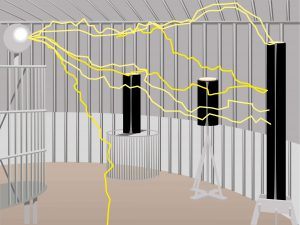Wireless networks have become a requirement for most K-12 schools, and that presents a challenge for IT teams who need to maintain consistent access and performance for students and teachers alike.
Case in point, the 3rd Annual Infrastructure Survey published by the Consortium for School Networking (CoSN) found that 99 percent of U.S. high schools have wireless networks, up from 57 percent the year before.
The report also noted that schools "have major 'pinch points' within the network that can affect connectivity and capacity, such as inadequate connection speeds for WAN and LAN, with wireless access points that lack capacity."
Wi-Fi Means More Effective Teaching and Education
It’s no wonder why Wi-Fi is so important. According to a November 2015 survey report by the Education Week Research Center, between 84% - 93% of the 700 teachers polled noted school Wi-Fi makes the following more effective:
- Increase the quality of differentiated instruction
- Increase student engagement, achievement and collaboration
- Enable more students’ devices and better use of classroom space
Wireless Networks: Pass or Fail?
The key challenges IT faces within K-12 school systems comes from stress put upon wireless networks as soon as they are installed. A combination of blended learning, common core testing, massive online open courses and other online programs require a lot of bandwidth.
In that same Education Week survey, 70 percent of teachers said their school’s wireless networks are slow and unreliable. They reported that it was frustrating to incorporate online tools into their teaching plans when the network can’t deliver the performance they need.
Only 27 percent said they were confident that their wireless networks can deliver glitch free on-line testing.
Wi-Fi at school presents a set of unique challenges that we don’t see in other environments. Let’s run through them one by one.
Delivering Consistent Wireless Signal Strength
Have you ever heard of a Faraday cage? It’s an enclosure formed by conductive material that blocks electric fields, or electromagnetic pulses (EMPs). As it turns out, the metal and cinder block construction of many schools form natural Faraday cages. This wreaks havoc with wireless signals, either degrading strength or blocking altogether.
 A typical Faraday cage
A typical Faraday cageEnergy efficient glass is also a problem. Many school windows use this glass that is designed to keep sun rays out and heat in during colder months. Unfortunately, this kind of glass is also efficient at blocking wireless signals.
Finally, HDMI signals connecting wireless devices to TV monitors and projectors can impact wireless performance. A friend of mine who’s an IT pro at a school system told me recently that he discovered over 20 different frequencies in just one of his schools.
Managing Wireless Capacity
Does your school have a Bring Your Own Device (BYOD) policy? Many children carry cell phones so they can be in touch with their parents and caregivers, not to mention tablets and other wireless devices that attach to a school’s Wi-Fi system. Altogether these devices significantly increase wireless network density.
The capacity management problem comes from controlling wireless bandwidth associated with students’ personal devices. IT needs to know what applications students are accessing. Are they applications specific to education, or not? How much bandwidth are they consuming? Who is using more bandwidth than they should?
Consider This Before You Buy More Equipment or Capacity
K-12 IT pros have to account for wireless density during peak usage to ensure access point capacity. To do so, they need visibility into student movement and access point subscription. After living through the realities of poor wireless signal strength and density problems, IT might advise that wireless capacity needs to be double or triple what was originally planned.
If this is the case at your school, stop before you invest in additional equipment and capacity for your school’s wireless network. First consider the following that wireless network monitoring can provide to make things work a lot better:
- Visibility and performance management across your (wired and wireless) networks, servers and applications
- Tools and information needed to optimize your wireless networks
- Wireless network maps that allows you to visualize the connectivity between students, access points and wireless LAN (WLAN) controllers to quickly isolate the source of performance problems
- Historical reports on SNR and RSSI measure your ability to deliver reliable signal strength and quickly identify new sources of noise that may be interfering with wireless performance
- Historical reports on client count help you to identify patterns in access point connectivity to ensure wireless capacity a peak usage.
If you’d like to see network monitoring in action, sign up for one of our weekly live demonstrations of WhatsUp Gold network monitoring tool, or give it a spin and download a free 30-day evaluation.
